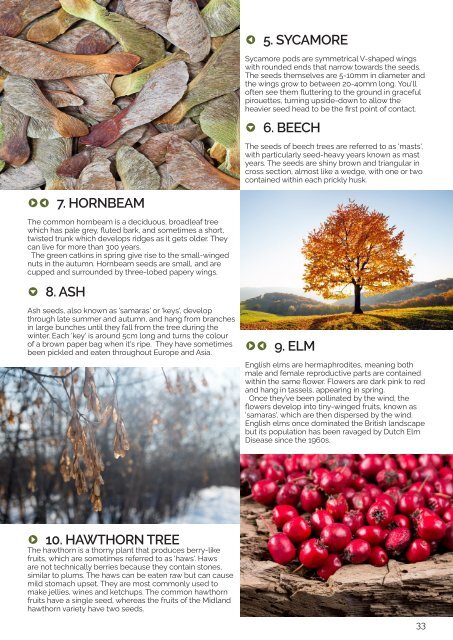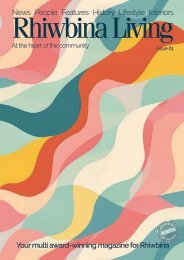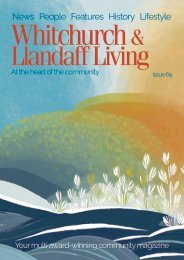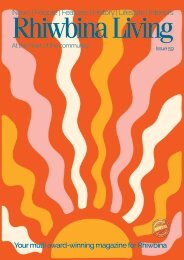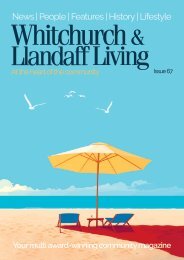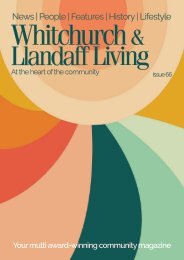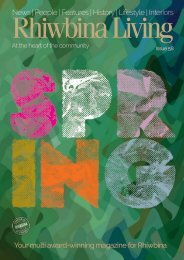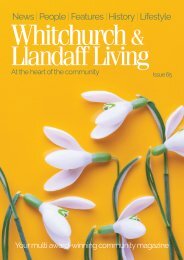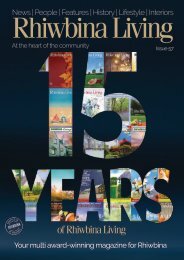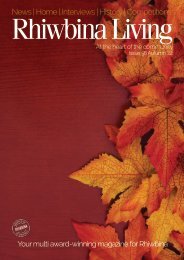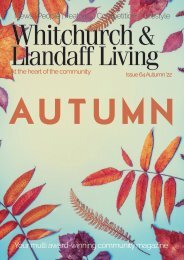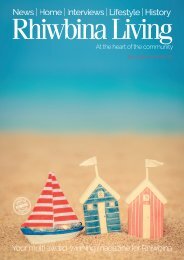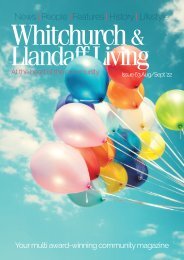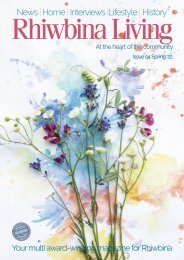Whitchurch and Llandaff Living Issue 68
Issue 68 of the award-winning Whitchurch and Llandaff Living magazine.
Issue 68 of the award-winning Whitchurch and Llandaff Living magazine.
You also want an ePaper? Increase the reach of your titles
YUMPU automatically turns print PDFs into web optimized ePapers that Google loves.
5 5. SYCAMORE<br />
Sycamore pods are symmetrical V-shaped wings<br />
with rounded ends that narrow towards the seeds.<br />
The seeds themselves are 5-10mm in diameter <strong>and</strong><br />
the wings grow to between 20-40mm long. You'll<br />
often see them fluttering to the ground in graceful<br />
pirouettes, turning upside-down to allow the<br />
heavier seed head to be the first point of contact.<br />
8 6. BEECH<br />
The seeds of beech trees are referred to as 'masts',<br />
with particularly seed-heavy years known as mast<br />
years. The seeds are shiny brown <strong>and</strong> triangular in<br />
cross section, almost like a wedge, with one or two<br />
contained within each prickly husk.<br />
65 7. HORNBEAM<br />
The common hornbeam is a deciduous, broadleaf tree<br />
which has pale grey, fluted bark, <strong>and</strong> sometimes a short,<br />
twisted trunk which develops ridges as it gets older. They<br />
can live for more than 300 years.<br />
The green catkins in spring give rise to the small-winged<br />
nuts in the autumn. Hornbeam seeds are small, <strong>and</strong> are<br />
cupped <strong>and</strong> surrounded by three-lobed papery wings.<br />
8 8. ASH<br />
Ash seeds, also known as 'samaras' or 'keys', develop<br />
through late summer <strong>and</strong> autumn, <strong>and</strong> hang from branches<br />
in large bunches until they fall from the tree during the<br />
winter. Each 'key' is around 5cm long <strong>and</strong> turns the colour<br />
of a brown paper bag when it's ripe. They have sometimes<br />
been pickled <strong>and</strong> eaten throughout Europe <strong>and</strong> Asia.<br />
65 9. ELM<br />
English elms are hermaphrodites, meaning both<br />
male <strong>and</strong> female reproductive parts are contained<br />
within the same flower. Flowers are dark pink to red<br />
<strong>and</strong> hang in tassels, appearing in spring.<br />
Once they’ve been pollinated by the wind, the<br />
flowers develop into tiny-winged fruits, known as<br />
'samaras', which are then dispersed by the wind.<br />
English elms once dominated the British l<strong>and</strong>scape<br />
but its population has been ravaged by Dutch Elm<br />
Disease since the 1960s.<br />
6 10. HAWTHORN TREE<br />
The hawthorn is a thorny plant that produces berry-like<br />
fruits, which are sometimes referred to as 'haws'. Haws<br />
are not technically berries because they contain stones,<br />
similar to plums. The haws can be eaten raw but can cause<br />
mild stomach upset. They are most commonly used to<br />
make jellies, wines <strong>and</strong> ketchups. The common hawthorn<br />
fruits have a single seed, whereas the fruits of the Midl<strong>and</strong><br />
hawthorn variety have two seeds.<br />
33


